Table of Contents
Public Relations:
A modern state is a public welfare state committed to securing the all-round socio-economic-politico-cultural development of its people. The government of the state has to formulate and execute developmental policies, plans, and decisions for achieving this purpose of the state. The chief mechanism with the help of which the government tries to secure the implementation of all its policies and programmes is the public administration system. It is this system that deals directly with the people and acts to provide them with goods and services in accordance with governmental policies and programmes. For this purpose, it has to maintain and develop healthy relations with the public at large.
Moreover, the increased popularity of the democratic way of living and action has made it essential for public administration to develop good public relations with the “sovereign people”. Under a democratic system, the administration has to be democratic. It has to deal with the people in a spirit of service and with all courtesy. One of the basic objectives, rather than the most vital objective of public administration is to serve the people. It can be accomplished only through the development of a sound public relations system. The administration has to reach the people for eliciting public opinion, know their needs as well as for disseminating information regarding governmental policies, plans, and programmes to the people. Public administration can do this only through a vibrant and healthy system of public relations.
Public Administration can be successful only when it is in a position to get active cooperation and involvement of the people in the socio-economic development process. The first Indian Prime Minister Pandit Nehru clearly explained all this when he observed “In any state, ultimately in any democratic state, if it is properly developed, or in any public welfare state, you have to remove the barriers between the administration and the so-called administered. All this can be possible only through good public relations. A good public relations system has come to be regarded as an important attribute of present-day leadership. As a matter of fact, public relations is at the heart of the political process.”
Dimock and Dimock are fully justified in observing, “In the long run, it (Public Relations) is the administrative function of prime importance.” Without a sound and active public relationship system, the administration can never hope to be successful in achieving the objectives of the government of the state.
Meaning of Public Relations:
Public Relations have been defined variously by different writers. The following are some of the popular definitions of Public Relations:
(1) Encyclopaedia America defines Public Relations as “the act of analyzing, influencing, and interpreting a person’s idea, group or business so that its behavior will conform to the greatest degree of possibility with the public interest.”
(2) According to W. T. Perry, “Public Relations means the development of cordial, equitable, therefore, mutually profitable relations between a business, industry or organization and the public it serves.”
(3) W. B. Graves says, “Public Relations involve a flow of information and understanding not alone from the agency to the public, but from the public to the agency.”
(4)According to McCamy, “Public Relations in government is the composite of all the primary and secondary contacts between the bureaucracy and the citizens and all the interaction of influences and attitudes established in these contacts.”
(5) In the words of J. D. Millet, “Public Relations is knowing what the public expects and explaining how the administration is meeting these desires.”
(6) According to Childs, “Public Relations may be defined as those aspects of our personal and corporate behavior which have a social rather than private and personal significance.”
In the broadest sense, Public Relations is almost synonymous with the administrative process itself because its purpose is to satisfy all parties of interest, public employees and management included……all organizations whether of government or non-government by securing a favorable public opinion in favor of the policies and decision being implemented by public officials.
(7) The most appropriate definition of Public Relations has been given by S. C. Scidel. According to him, “Public Relations is a continuing process by which the management endeavors to obtain the goodwill and understanding of its customers, its employees, and the public at large inwardly through self-analysis and correction and outwardly through all means of expression.”
After reviewing these definitions, we can say that Public Relations is a two-way exercise. By it, the administration comes to know of public expectations from the government and public relations towards governmental policies, plans, and programmes. The Public Relations system acts as an information system as well as a feedback system. Along with this, it is the process by which the administration disseminates to the public information about governmental policies, plans, and programmes.
In other words, as J. D. Millet observes, Public Relations include the following:
(1) Learning about public wishes and aspirations.
(2) Influencing and advising the public about what it should think, desire and do in a specific sphere of activity.
(3) Making satisfactory contacts between the public and the officials.
(4) Keeping the public informed about what an administrative agency is doing.
A Public Relations exercise is governed by four major purposes.
(1) To keep internal administration directed.
(2) To keep the employee alert and alive towards the objectives, policies, plans, programmes, and expectations of the public.
(3) To further democratic education and access to information.
(4) By these means assess the survival and influence of the administration upon the public.
What does not come under Public Relations?
To be more clear about the term Public Relations, we should also know what Public Relations is not. This term is not to be confused with several other activities which have similar connotations. Such activities are:
- Propaganda.
- General informative activities of the administration.
- Foreign Information Service.
- Internal communication and relations.
(1) Public Relations and Propaganda- As publicity is one of the important parts of public relations, it is likely to be confused with propaganda. The two, however, are different. The object of publicity is to disseminate knowledge of facts, whereas the object of propaganda is to influence the conduct in a particular manner. Secondly, the source of publicity is known and the source of propaganda is veiled. The object of public relations is to help and serve the people. On the other hand, propaganda seeks to tamper with public opinion and favors conduct that is likely to serve selfish interests.
(2) Public Relations and General Informative Activities- The government of a state collects and publishes for public use a great deal of general information which is not a part of its public relations exercise example, such general information as census reports, weather, and crop reports, etc. These involve only general information which is not related to Public Relations, whose purpose is to favorably influence the people towards governmental policies.
(3) Public Relations and Foreign Information Service- The Foreign Information Service is in no way a part of internal public relations. The objective of the foreign information service is to interpret and project the policies, acts, civilization and culture of the country in a positive, healthy, and constructive way.
(4) Public Relations and Internal Communications- Public Relation is also different from internal communications. The object of the latter is to keep the staff or the employees of the organization duly informed of the policies, objectives, and decisions of that organization and to make the information regarding the internal working of the department available to all its parts.
Thus Public Relations is different from Propaganda, General Information Activity, Foreign Information Service, and Internal Communication. It is the process by which active contacts are maintained between the administration and the public in general, and it involves the gathering of information about public aspirations, opinions, and reactions as well as the dissemination of information about the policies, plans, and programs of the government and about the working of Public Administration.
Public Relations Functions:
The Public Relations Department usually forms part of the administrative network. It has the primary responsibility of undertaking public relations work. However, each department is also involved in this work in one way or the other.
Public Relations constitute a broad name for several different functions performed for getting as well as disseminating information.
While conceptualizing the functions of Public Relations, Brebner has observed that “the simplest way of describing the functions of public relations in modern administration is to say that they are concerned with the study of the human factor in industry and to an increasing degree in government.”
The following are the important functions that fall within the realm of Public Relations.
(1) Research- It is the duty of the Public Relations Organization (Department) to assess and collect public opinion and to conduct research. Public Relations is really a two-way traffic. The administration must keep the public informed of its own policies and work and must also inform itself of what the public thinks and desires.
The Public Relations Department ascertains public aspirations and opinions from newspaper editorials or comments, letters to the editor, and other relevant news items. It collects information about the activities and demands of various public associations. At times, it also uses service-sampling techniques for ascertaining public aspirations, needs, and reactions. It conducts special surveys as well as opinion polls for eliciting public opinion on various issues and problems. It remains in touch with civil servant associations and other interest groups or associations for collecting information. In other words, the Public Relations Department keeps on conducting research for collecting information about public aspirations, needs, claims, demands, and opinions.
(2) Advising the Public- It is the function of public administration to help the people to understand and analyze the policies and programs being implemented by it.
Advising the public about what it should think, desire or do is one of the most delicate aspects of Public Relations. It is to advise the people on certain vital matters concerned with their safety, health, prosperity, and convenience. The techniques of protection against infectious diseases like tuberculosis, smallpox, plague, cholera, and others must be brought to the notice of the people. Organization of civil defense exercises, the celebration of public safety days or weeks or months, and organization of special drives for explaining to the people the governmental policies and programs with a view to encouraging their adoption by them, all fall within the scope of the advisory functions of public relations.
(3) Cultivation of active and good contacts between the officials and the Public- Another important function of Public Relations is to cultivate satisfactory contacts between the officials and the public. The main problem of relations between these two sides arises in connection with:
- the reception of individual callers at the public offices and giving them the information being sought;
- suiting official procedures, as far as possible, to people’s natural view of expectation and behavior;
- correspondence, and
- satisfactory procedure for dealing with complaints.
(4) Publicity- it is one of the most potent functions of Public Relations. Conveying information or advice to the people en masse is the task of publicity. Publicity, in the words of J. E. Brebner, “is the art of dealing with the people in the mass.” For reaching the people, the mass media i.e. means of mass communication are to be used. The newspapers, films, the radio, the T.V., books, posters, reports, cable TV, etc., are important instruments of publicity.
For the purpose of conducting public relations, three publicity media are most frequently used:
- Visual Media.
- Audio Media.
- Audio-Visual Media.
The first includes advertisements, publications and silent movies, documentaries, cartoon movies, or slides.
The second includes radio talks, debates, conferences, radio conferences, etc.
The third i.e. the audio-visual media includes films and television programmes.
The following are the chief means of publicity:
(1) Advertising- Advertisements in newspapers and periodicals, on the screen and through air poster advertising, folders, leaflets, calendars, blotters, etc., are included under advertising. Advertisements in the newspaper and periodicals reach a very wide section of the population. Poster advertising has not yet grown into a profession. The films are used for advertisement purposes to a limited extent. Currently, the use of television telecasts has been emerging as a very important means of advertising.
(2) Publication- Publication is another means of publicity. The government of the state itself publishes a lot of material in the form of reports i.e. annual reports of the different departments and the reports of committees and commissions. It also publishes specific or general service reports like economic survey reports, census reports, and plan target reports. In order to serve as an effective media of public information, the reports have to be published in an easily understandable language. They should be made available to the public either free of cost or at nominal prices.
(3) Films- Films or motion pictures are a powerful means of publicity. They are recognized as a powerful instrument of popular education. The role of films in society and in particular their impact on the younger generation can hardly be over-emphasized. Besides being a source of entertainment, the films exercise a deep influence in molding the ideas and behavior of young men and women. The function of the films division of the publicity organization is to produce films that are of two types i.e.
- Documentaries.
- New-reels.
The documentaries have an educational purpose and the new reels have news value. In India, the DAVP division is performing a notable role in this sphere.
(4) Exhibitions- Publicity exhibitions are different from trade fairs. The objective of exhibitions is educational and not merely a display of things for sale. They serve as publicity functions and render useful services for giving mass information and explanations. Such exhibitions make use of all kinds of visual material, murals, paintings, diagrams, photographs, physical objects, practical demonstrations, live shows, etc. J. E. Brebner appreciates the role of exhibitions when he observes, “the modern publicity exhibition seeks to develop an argument, to present an idea, to tell a story.”
(5) Radio and Television Programmes- Radio and television have become important media of mass communication. They are used for informing the public of government activities and educating them on important matters. The Government sponsored radio and T.V. programmes are of two types i.e. News broadcasts/telecasts covering different areas of social life- public health, ecology, agriculture, industrial and technological innovations, and special programs like educational programmes on the use of fertilizers, saving the crops from insects and diseases, safety rules, health rules, family planning, adult education, etc. The success of the SITE experiment in India has demonstrated fully the potential of TV/Radio programmes.
(6) Lectures and Talks- public relations agencies also organize lectures and talks by experts on a variety of subjects. During the course of such lectures and talks, audio-visual means are also used to emphasize the key objectives. At the end of such programmes, printed material is often distributed among the audience.
Obstacles in the Way of Public Relations:
The following are the obstacles that stand in the way of effective public relations:
(1) The complexities of a modern democratic government can be a hindrance in the way of effective Public Relations. The reason is that a democratic government, particularly a parliamentary government, is a party government. The legislature and the people fear that under the garb of Public Relations and publicity, the party in power can indulge in the propaganda of government policies and programmes. Publicity, as Dr. M. P. Sharma observes, may degenerate into puffs i.e. personal publicity for individual ministers or officials.
(2) The usually indifferent attitude of the general public can be another obstacle in the way of public relations. Often, the general public is not prepared to listen to official releases.
(3) A third big hindrance in the way of public relations can be the lack of appreciation on the part of many public officials of the importance of their responsibility in respect of public relations. Their attitude towards this work can very often make this function very difficult and negative.
(4) The lack of objective indices to measure the effectiveness of the methods used also hinders the work of Public Relations. In the name of Public Relations, populist and cheap propaganda can be put out by the officials.
(5) The limited funds available for Public Relations activities and the consequent necessity of foregoing professional technical assistance also, at times, hinder the undertaking of effective Public Relations.
(6) The difficulty of maintaining impartiality on the part of Public Relations officers often acts as a big hindrance in the way of conducting healthy Public Relations.
(7) The difficulty involved in persuading the public to accept that public relations devices are not necessarily propaganda tricks often checks the development of sound Public Relations.
Besides these identifiable general hindrances, several other socio-economic factors- widespread illiteracy, ignorance, poverty, overpopulation, and other such factors- also adversely affect the organization and conduct of Public Relations. The low level of credibility and legitimacy of an authoritarian government also acts as a hindrance in the way of Public Relations. A dictator or an authoritarian ruler always tries to undertake propaganda in the name of Public Relations. Several environmental factors also act as hindrances in the way of sound Public Relations.
However, one encouraging factor is always present, which can be and should always be encashed i.e. the possibility of overcoming these hindrances is always present. Through conscious and planned efforts, in fact, through healthy public relations, obstacles to public relations can be effectively overcome.
Conclusion- The need for Public Relations is now increasingly being recognized in every country. It is only through public relations that the public administration can impress upon the public the importance of official policies and programmes. Through an effective and sound public relations system, public administration can secure increased public support for and participation in the policies and programmes being implemented. This achievement can go a long way in enabling the public administration to realize its goals.
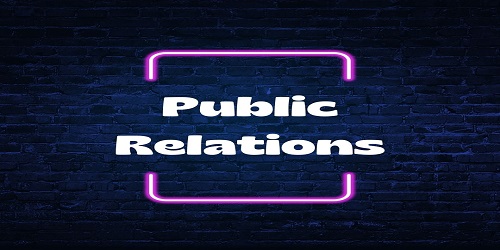

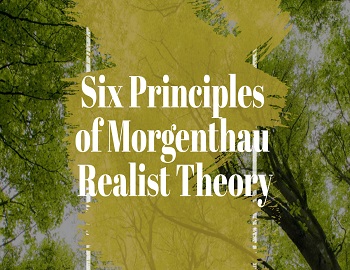
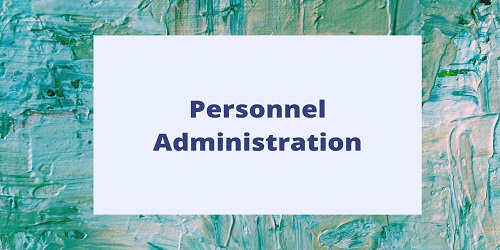

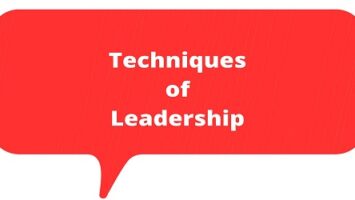


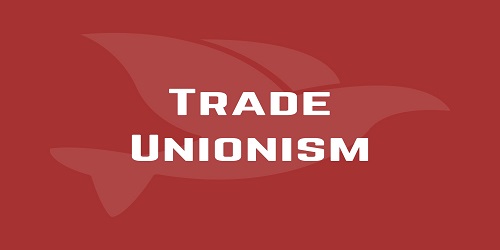
Comments (No)